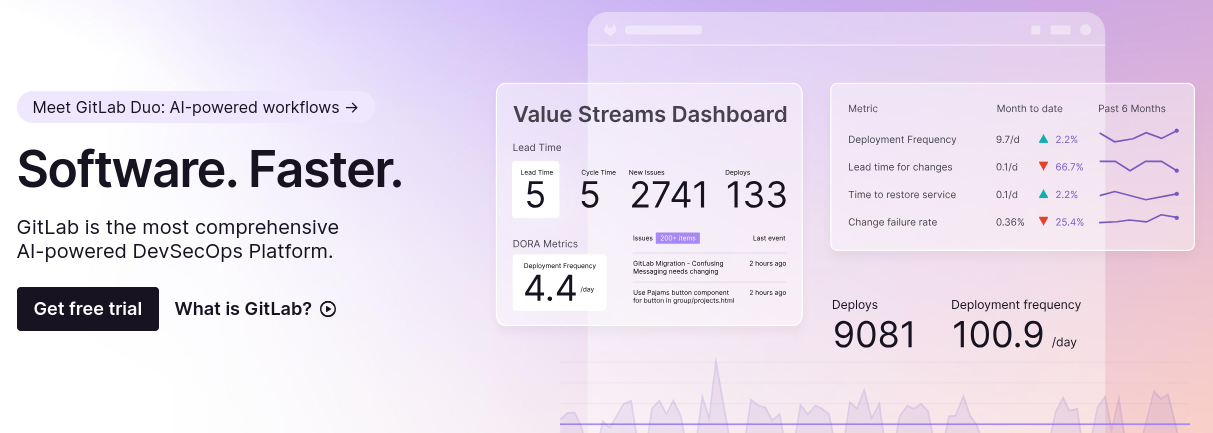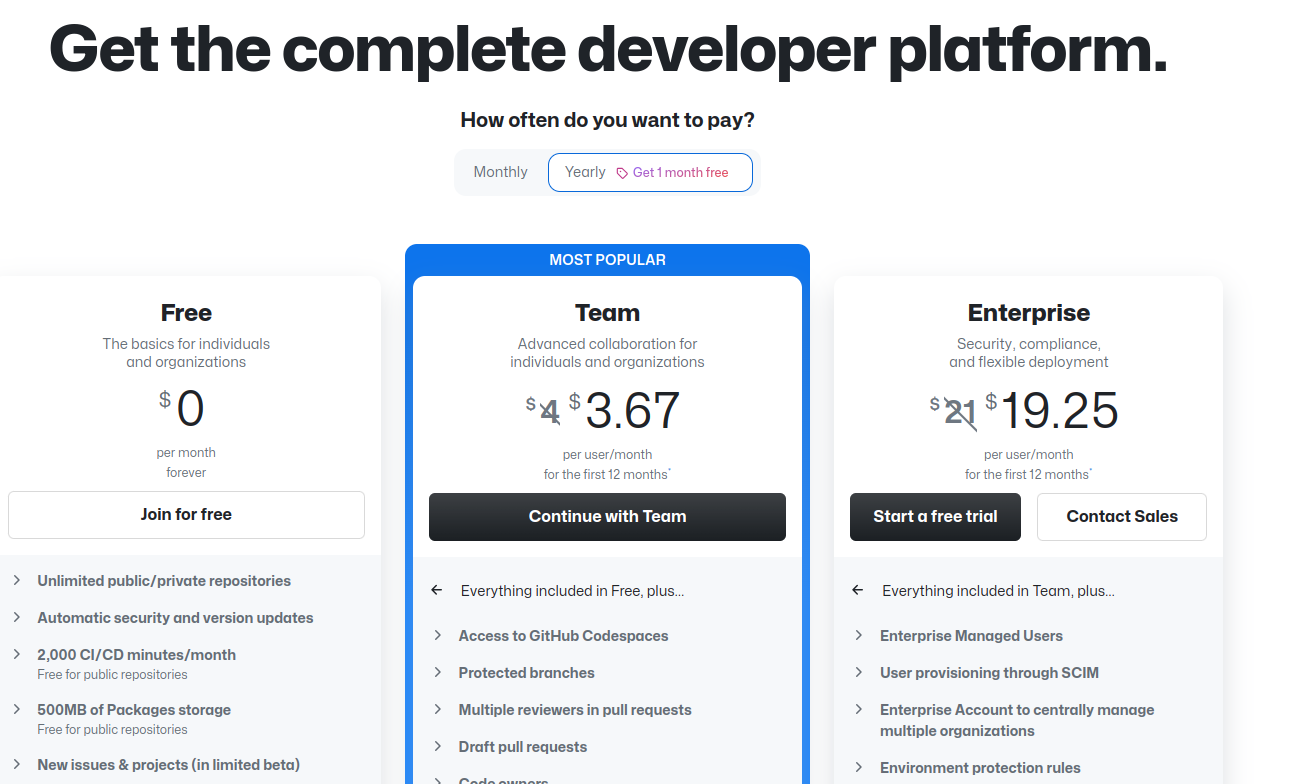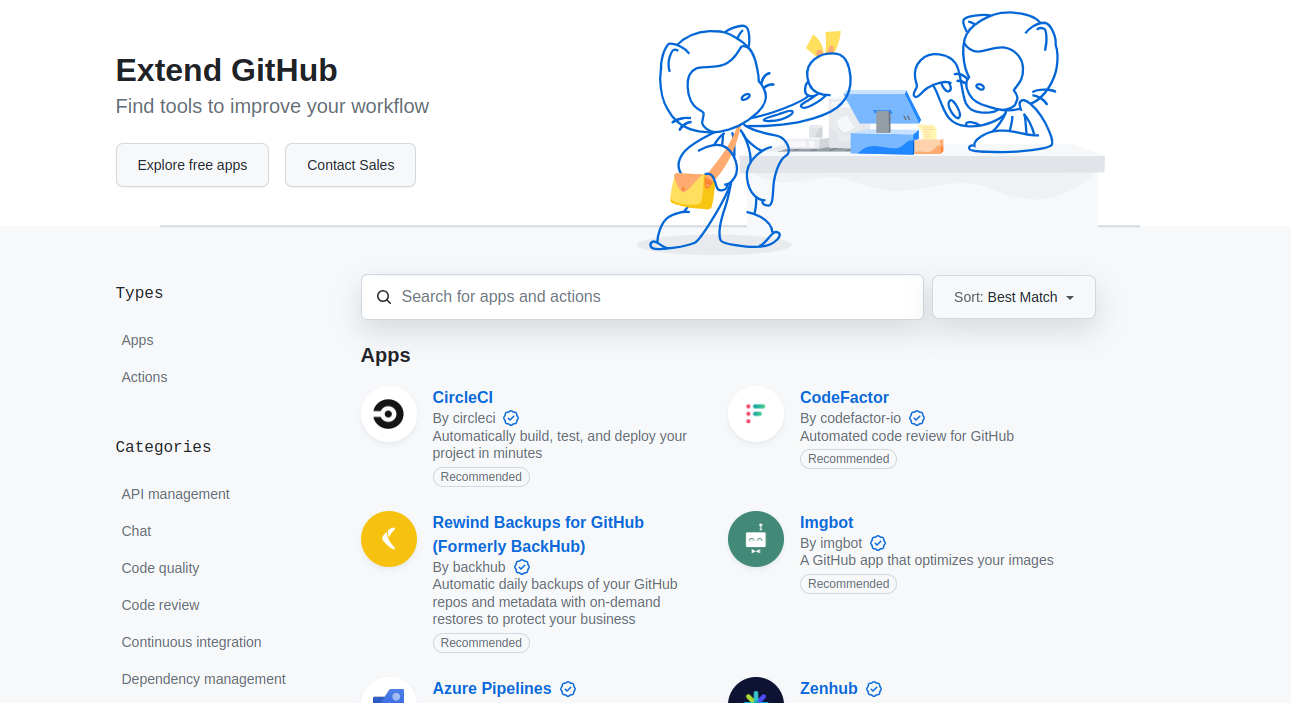Development is an extensive niche as it has software engineers, web developers, data scientists, and other professionals. Developers need various tools/ platforms to simplify their development process. GitHub and GitLab are among the most-used cloud-based platforms for collaboration and storing repositories among developers.
Such developers need a place to securely store their repos, collaborate with team members, track issues and manage pull requests. Both GitHub and GitLab provide users with the mentioned features.
Even though the platforms share some similarities, they differ in various ways. It is estimated that GitHub has over 100 million users, while GitLab has over 30 million registered users.
This article will explain how GitHub and GitLab work, their similarities, differences, and use cases.
GitHub Introduction

GitHub is a cloud-based service that helps developers manage, store and store changes to their code. Opening an account on this online development service is straightforward, making it loved by people worldwide. You can use GitHub for free or its paid services to get more features.
GitHub acts as a social network for programmers. As a developer, you can decide to publicly display your repositories or make them private. If the repositories are public, others can see what you have been posting, and it is an excellent way to build your portfolio.
How does GitHub work?
You can use GitHub to store, manage and track changes in a repository. However, to achieve all this, you must connect it with Git. Git and GitHub are two different platforms. Git is an open-source version control application that makes tracking and managing files easy.
If you have a distributed team working on a big project, the team lead can create a repository and give access to different members. If need be, the members can create different branches and fork the source code to their local machines.
Each member will work on different files independently on their local machines. Such members will use Git to track changes to the code on their machines. When done, they will push the code to their respective repositories, compare the changes, and merge if all conditions are met. GitHub allows developers to track the code changes, collaborate and manage pull requests.
Benefits of using GitHub

- It is cloud-based: You can access your GitHub projects from any device or any part of the world as long you have an internet connection.
- Easy file management: A typical development project has different files. GitHub makes it easy to manage these files by providing a graphical user interface created on top of Git.
- Enhanced collaboration: Development is all about collaboration. GitHub makes it easy to create branches, manage pull requests and track all the changes made to a codebase. You can also assign different rights to different team members to avoid conflicts.
- Easy to use: Git can be somehow technical as it is command-line based. On the other hand, GitHub is GUI-based, making it easy for users to track, manage and store repositories with a few clicks.
- Social networking: Developers can showcase and discuss their code base with others on GitHub.
Limitations of GitHub
- Lacks built-in code control features.
- Relies a lot on third-party integrations for CI/CD processes.
- Offers limited self-hosting services, which may not sit well with organizations that want to have their data in the same place.
- Limited features with private repositories in the free plan.
GitLab Introduction

GitLab is a DevSecOps Platform. As a DevSecOps (development, security, and operations) platform, GitLab automates security integration at every development lifecycle phase, from the initial design to software delivery.
GitLab is based on Git. This platform is designed to make it easy to manage, track and deploy codebases to the cloud. GitLab allows developers to set up private and public repositories to cater to varying needs. The platform offers free and paid packages that offer varying features.
How does GitLab work?
GitLab is an all-in-one platform that will be there for you from the ideation to the feedback stage of your app’s lifecycle. If you work as a team, members can create branches (photocopies) of the original and work independently.
After members make changes to their branches, they commit and push to their respective branches. The reviewers will then go through commits (code review) and approve them if they pass the guidelines. A merge request will be made, and the process will continue.
GitLab acts as a cloud storage, making tracking changes easy and creating a collaboration space.
Benefits of using GitLab

- Deliver software fast: GitLab allows you to automate the software delivery process. Such an approach eliminates most manual work, giving you more time to focus on development.
- Built-security: You don’t have to wait until you have created your software to test its security. The DevSecOps approach offers continuous software security assurance in all phases.
- Ensure compliance: Define the rules, and GitLab will ensure compliance across different levels.
- Improved collaboration: Invite team members and contributors to your repositories and work towards a common goal.
Limitations of GitLab
- It can be complicated for smaller projects due to its many features
- As GitLab offers built-in CI/CD tools, it only offers a few integrations, limiting users who want third-party tools.
- Considerable learning curve due to the many features offered by this platform.
GitHub vs. GitLab: Similarities
Even though the two platforms differ in their definitions and how they work, they share these similarities;
- They extend the use cases of Git
- They allow collaboration
- They integrate various services and tools in the software development lifecycle.
- Both offer static webpages, GitHub Pages for GitHub, and GitLab Pages for GitLab.
- Both platforms allow you to use external tools like Jira for issue tracking.
GitHub vs. GitLab: Differences
GitHub and GitLab allow users to store, manage and track repositories from their GUI and command-line interfaces. However, they differ in these ways;
Continuous Integration/Continuous Delivery (CI/CD)
GitHub allows developers to work with CI/CD tools of their choice. You must understand how to integrate third-party tools like TravisCI or Jenkins to simplify the software development lifecycle.
GitLab offers built-in CI/CD tools. This feature makes it a favorite of DevOps engineers who need to track an application’s lifecycle. You can also easily integrate GitLab with third-party tools like Codeship and Jenkins.
Pricing
GitHub has a free plan where developers can create unlimited repositories. Users can also create private repositories in the free plan but with limited features. GitHub also has paid plans that start from $3.67 per user/month, ideal for teams and organizations.

GitLab has a free plan that offers 5GB of storage space. This plan has all the essential features you may need as an individual. Paid plans at GitLab start from $29/month/user. The paid plans have advanced CI/CD rules; you can set approval rules for merge requests.

Issue tracking
GitHub has a built-in issue tracker, making creating, tracking, and managing issues easy. The tool is visually appealing and has features like assignees, milestones, and labels, to mention a few. You can see what each developer is working on if you are the team lead. Such team members can also create issues and label them accordingly.
GitLab uses the “Issues” feature to track all the issues. This feature lets you discuss and share proposals with team members and outside collaborators.
Import and Export
GitHub’s import feature makes it easy to import existing projects from version control platforms like Mercurial and Subversion fast. This same feature allows you to move your projects to other platforms.
GitLab allows you to import projects from platforms such as GitHub, Bitbucket Server, Bitbucket Cloud, or using a manifest file. You can use the available importers or migrate using an API. The choice of migration approach will depend on the nature of the project.
Workflow
GitHub focuses on speed in its workflow. It allows you to create new branches, which you can merge with the main once you are done with development. The main branch is always development-ready. GitHub is suitable for small projects due to its focus on speed.
GitLab’s focus is on reliability. It allows you to create multiple stable branches from the master. This platform allows multi-step testing. Such an approach can slow down the software development process for smaller teams.
Integrations
GitHub supports many integrations for tools needed in the application development lifecycle. You can integrate with issue trackers or tools that help with development easily. All the tools you need are listed on its marketplace. Developers can create apps and list them on the marketplace as long as they offer value to the users.

GitLab is more of a packaged platform. It also integrates with external services to enhance workflow. However, you may not need to integrate with third-party tools as GitLab has CI/CD feature built-in. However, the integrations provided by GitLab are less than those on GitHub.
GitHub vs. GitLab
| Feature | GitHub | GitLab |
| Collaboration | Yes. You can invite team members to contribute to a project | Yes. You can invite team members to contribute to a project |
| CI/CD | Third-party tools like Jenkins | Built-in CI/CD tools |
| Import/ Export | Yes | Yes |
| Issue tracking | Built-in and third-party tools support | Built-in and third-party tools support |
| Free plan | Yes. Paid plans from $3.67 | Yes. Paid plans from $29 |
| Self-hosting | No | Yes |
| Year created | 2008 | 2011 |
| Static pages | GitHub Pages | GitLab pages |
When to use GitHub

These are instances when GitHub is a perfect choice for developers;
- Storing open-source projects: GitHub suits developers who want their projects accessible to the public.
- Version control: GitHub uses Git as version control, and you can thus manage pull requests and track changes using this platform.
- Integrations: GitHub has a big marketplace and integrates with almost all the apps you need in your software development lifecycle.
- When looking for a big community: GitHub is the most popular repository storage service with a big community.
When to use GitLab

- DevOps: The built-in CI/CD pipelines in GitLab makes a good choice for DevOps engineers.
- Containerization: If you have broken down your app into small parts and use containerization platforms like Kubernetes and Docker, GitLab will be a perfect choice as it integrates effortlessly.
- Open-source projects: You can store source code publicly on GitLab.
- When looking for advanced security: This platform allows you to automate the security and privacy of your application through various features, fine-grained access control, and mandatory code reviews in your app’s lifecycle.
Conclusion
Both GitHub and GitLab offer powerful code management features. The choice will boil down to the nature of the project, your preferences, and the features you are looking for. GitHub will be ideal if you want a platform with many integrations, an easy-to-use interface, and a big community. GitLab suits users who want CI/CD tools built-in.
Learn more about GitLab in our extensive article.
-
 EditorNarendra Mohan Mittal is a senior editor at Geekflare. He is an experienced content manager with extensive experience in digital branding strategies.
EditorNarendra Mohan Mittal is a senior editor at Geekflare. He is an experienced content manager with extensive experience in digital branding strategies.



